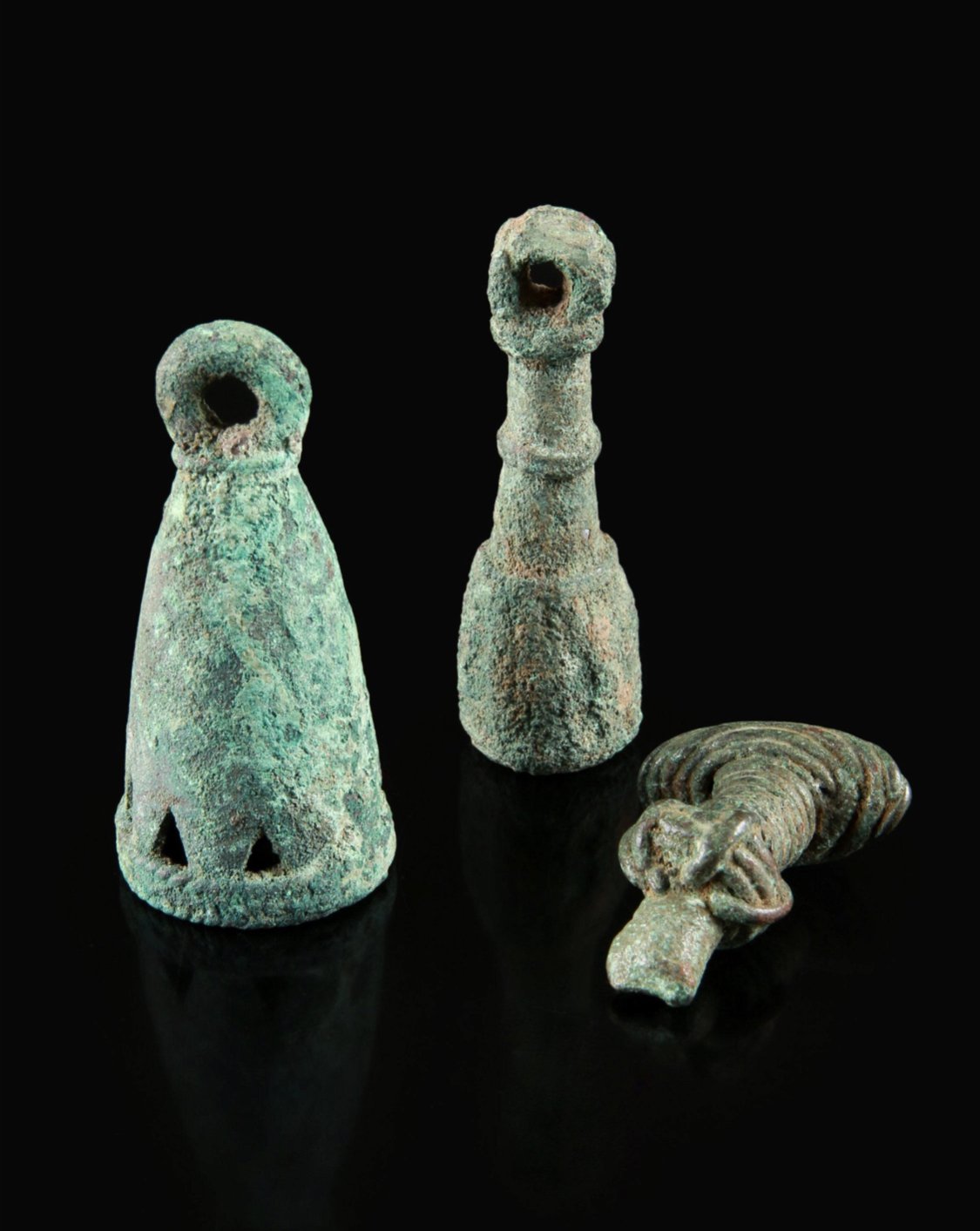Inland Niger Delta Culture

Inland Niger Delta Culture terracotta figure adorned with bracellets and a cape. Mali





nland Niger Delta culture (Djenne), terracotta heads (remnants of two figures), Ca. 11th to 15th c. Mali. Dimension of larger head: 2.25 x 1.5 x 2 in. Purchased in Mali 1977. Ex-Estate of Robert and Nancy Nooter collection.



A small Inland Niger Delta culture equestrian figure. Mali


Inland Niger Delta Culture terracotta remnant. "head of a mudfish", Mali



Three Inland Niger Delta culture bronzes, of a bell (bronze and iron), a finger ring (bronze. H 5.2 cm) and a bracellet (bronze, 7.5 cm ø) Djenné, Mali

A Bronze bracelet, Djenné. Mali Ø 7.5 cm. Estate of René David, 1928-2015. Zurich Exhibited: Musée International du Golfe de Guinée, Togo (2005-2011).

Inland Niger Delta Culture bronze bell with iron ringers, Djenné, Mali.


Inland Niger Delta Culture finger ring, bronze, H 5.2 cm. Provenance: Estate of René David, 1928-2015. Zurich Exhibited: Musée International du Golfe de Guinée, Togo (2005-2011).

3 bells, Djenne, Mali, copper alloy. H 4 - 6.5cm. EX Galerie Walu, Zurich (before 1990), EX Swiss private collection, Basel. The ancient city of Djenné was founded around 800 AD and belonged to the Empire of Ghana. It was the most important trading post for caravans crossing the Sahara, and thus also a link between black Africa and the Mediterranean. Terracotta and metal objects have been found in the region of this city since 1943 due to changes in the course of the river. Although this region was already Islamized at that time, figurative art obviously developed there at the same time. Scientific analyzes date the finds between the beginning of the 11th and the end of the 17th century. Jewelery in a wide variety of shapes and materials has always accompanied and fascinated people of all cultures. From a cultural point of view, however, bracelets and anklets, amulets, finger rings and necklaces are much more than just pieces of jewelry. In large parts of Africa, the masterfully crafted gems are valued for their beauty, but the valuable ornaments are also part of religious beliefs. They are therefore testimonies to the affiliation, rank and belief of the wearer.

